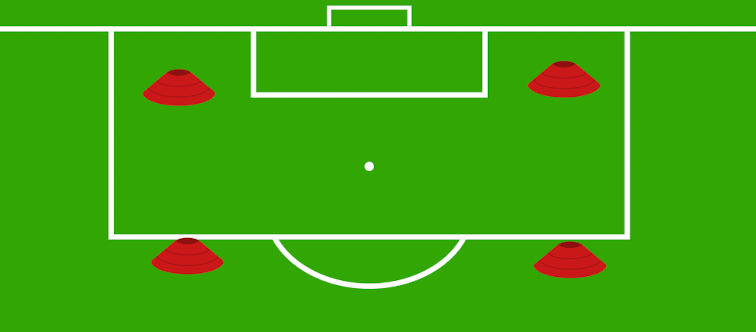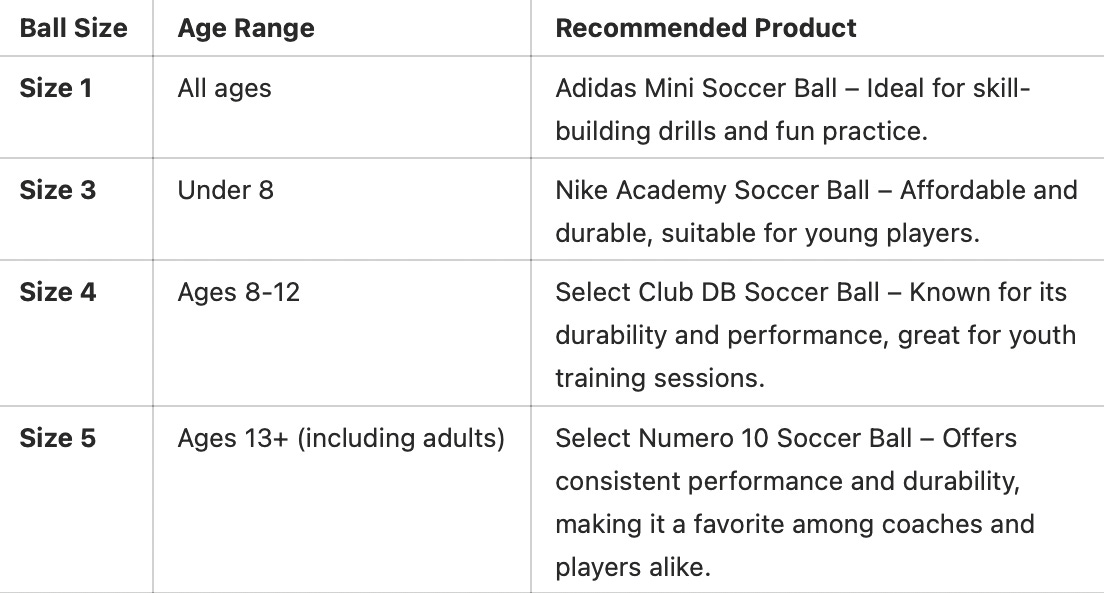Skills Spotlight: Control In Tight Spaces
Soccer Training Weekly: Volume 1
Let’s focus on developing a player’s control under pressure (generally there are three types of pressure: pressure of limited space, pressure of an opponent (s), and pressure of limited time to execute the skill (s). For soccer athletes to develop and grow to master what they do when in possession of the ball it is paramount that they are trained in a progressive manner with increasing levels of pressure so that they realize confidence, success and happiness in the game.
This week will focus on a 45-60 minute session intended for one athlete. These exercises can be scaled up to a team workout, which we will detail at the end.
In this session, you will do everything with a ball at the athlete’s feet: everything.
For this workout you will need:
Cones
1 ball, minimum
HINT: In a pinch, you can be creative and use shoes, shirts, or other items to layout the training space (s). We have all been in situation where equipment is lacking. Also, many times using markings on a training area can be helpful in setting aside your training spaces. Don’t let lack of equipment or official markings hinder you from using your imagination and adapting.
Key takeaways for the athlete:
Why control under pressure is critical
How to exercise their first touch into gameplay (action) under pressure
Converting their first touch and action into an accurate and effective pass
Flow:
Warmup: coach’s choice
Recommended: 10-15 minutes of progressive jogging, running, sprinting
Dynamic stretching (stretching in motion)
Colder weather may require a longer warm-up. Also, some athletes may need more time than others. As you get to know your athletes this will become evident.
In the example below, note the varied motions used to prepare the athletes bodies for the types of activity the players will be performing in your sessions.
Dynamic Stretching, Example:
Let’s transition to a technical warmup, start by creating a large box (20 steps between cones)
If you are on a field, use the 18 yard box as a reference (or just use the 18)
Warmup Progression: Instruct the athlete to focus on quality touches and maintaining vision of the field, not speed, effort should be relatively easy. (10 minutes):
Dribble the ball touching every step with the instep (laces) using all of the space in the box (2 minutes)
Dribble the ball touching every step alternating between the inside of either foot and the outside of either foot (2 minutes)
Dribble the ball touching every step with the sole of their foot, rolling the ball, using the entire space (2 minutes)
Back to using the instep, instruct the athlete to touch every step until you say “Go” in which case they will turn with the ball and accelerate (touching every step) going as fast as they can to the line of the box furthest away from them (2 minutes, 1 rep every 30 seconds for 4 reps total)
Free movement for 2 minutes, any direction, touch the ball every step using any part of every step. Hold up numbers with your hand, for example, 1, 2, 3, 4, 5 - 10 fingers. While the athlete is dribbling ask them to call out the numbers on your hand (s) and be in motion so they must do the exercise while seeing you. This emphasizes the importance of seeing the field ( i.e. passing, shooting target (s) at all times). The more confident the athlete is on the ball the more efficient and effective the player will be. If they see options to get out of pressure quickly they can make decisions quickly under pressure also.
The Small Box - 20 Minutes
On Soccer Training Weekly, we will come back to tight spaces a lot. Technical ability is the foundation on which our philosophy will be built. The greatest players and teams demonstrate the most comprehensive mastery of the ball. Their ability to make the ball do what they want it to do empowers them to play the game versus worrying about what the ball is going to do when they receive it.
Exercise Progression
Coach is in blue (in a group setting, training player in the box, supporting player outside of the box 10-12 yards away).
Box should be small, 1-2 feet (maximum) outside of the athlete’s feet in a natural standing position.
Goals of the exercise:
Practicing their first touch by controlling the ball in a tight space
Practicing their first touch with a varying types of inbound passes
Practicing using their first touch to go somewhere and their second touch to play an accurate pass
You should be reinforcing:
Tight control
First touches that lead to an accurate pass on the second touch
Heads up, eyes up under pressure/constraint (remember to gradually increase the various pressure mechanisms, i.e. limit space, limit time, introduce defenders)
You should be coaching:
Loose control
WATCH: Why was the touch out of control? What mechanical errors were made, or was the error a lapse in focus? Coach both in the moment, reinforcing the why behind the laser focus on control (just be sure to give the athletes the chance to make some errors rather than stopping the exercise too often, make the majority of your coaching points while the athlete (s) are doing the exercise).
Eyes down: coaching approach depends on the skill of your athlete. Eyes down far enough to see the ball means they’re thinking nothing ahead and are prepared for the next step; they’re only thinking about the ball and what to do with it. If your athlete is developing their technical ability, build into your coaching approach here.
Coach passes the ball, at a moderate and controllable pace, to their athlete inside the box. 5 minutes (if the coach has no experience passing a soccer ball, a teammate can be used)
Their first touch cannot make the ball leave the box, we’re simply looking for a first touch to keep the ball within the box.
Pass back to you, accurately: are their hips facing you? Is their plant leg next to the ball with their plant foot just ahead of the ball? Is their passing leg following through towards you (picture a great putt)? Did the ball arrive with pace and to you accurately?
Coach passes the ball with almost unreasonable levels of pace without regard to the quality of the pass: you will DELIBERATELY play “hospital balls” (aka bad passes) into the box/playing area. At this point: we’ve done a dynamic warmup and had hundreds of touches. Your athlete should be warm and in rhythm. 10 minutes.
Same focus: Their first touch cannot make the ball leave the box; we’re simply looking for a first touch to keep the ball within the box.
Pass back to you, accurately: are their hips facing you? Is their plant leg next to the ball with their plant foot just ahead of the ball? Is their passing leg following through towards you (picture a great putt)? Did the ball arrive with pace and to you?
Now we’re LASER focused on the first touch being the preparatory touch, the second touch, a pass. The inbound passes should be much more difficult; your athlete will have their first touches exceed the barriers of the box. That’s okay. Catch them doing something great: celebrate the first touches that stick like glue.
Back to a normal pass: Coach passes the ball into the box, but this time we want a different behavior. Now we want our athletes to take the ball in motion and under control, followed by an accurate pass. 10 minutes
Instruct your athlete to use their first touch, alternating directions, to push the ball just outside of the box.
Their second touch is to play the ball back to you accurately with the same foot they controlled it with.
You’re coaching for: intentional first touches, accurate passes back. Again: hips squared to the target (you), follow through to you, using great footwork to make sure that happens. (In future Soccer Training Weekly posts, we will share footwork and conditioning exercises.)
Cool Down
In a personal session (with one athlete), this can fill a full hour with more progressions that we will cover and add in future weeks. You can also evolve this into more skill work. As a personal session, cool down with gentle jogging and dynamic stretching followed by a short period of dynamic stretching.
Ask your athlete what their key takeaways were and ask them to tell you why we worked on these skills today. Share where they excelled and what they need to work on.
A master of control under pressure was Xavi. Xavi was a central midfielder for one of the greatest Barcelona teams in history, winning championships alongside Messi. In the video below, you’ll notice, in detail, that Xavi never receives the ball standing still, and his eyes are always up. Xavi knows what his options are before he receives the ball, and this clip is an excellent instructional reference for you to observe excellent behaviors in your session and celebrate them with your athlete.
Recommended Products
We are not affiliated with any products, websites or brands. These are simply examples that we encourage you to shop!
Hi-Vis Disc Cones via Soccer.com





